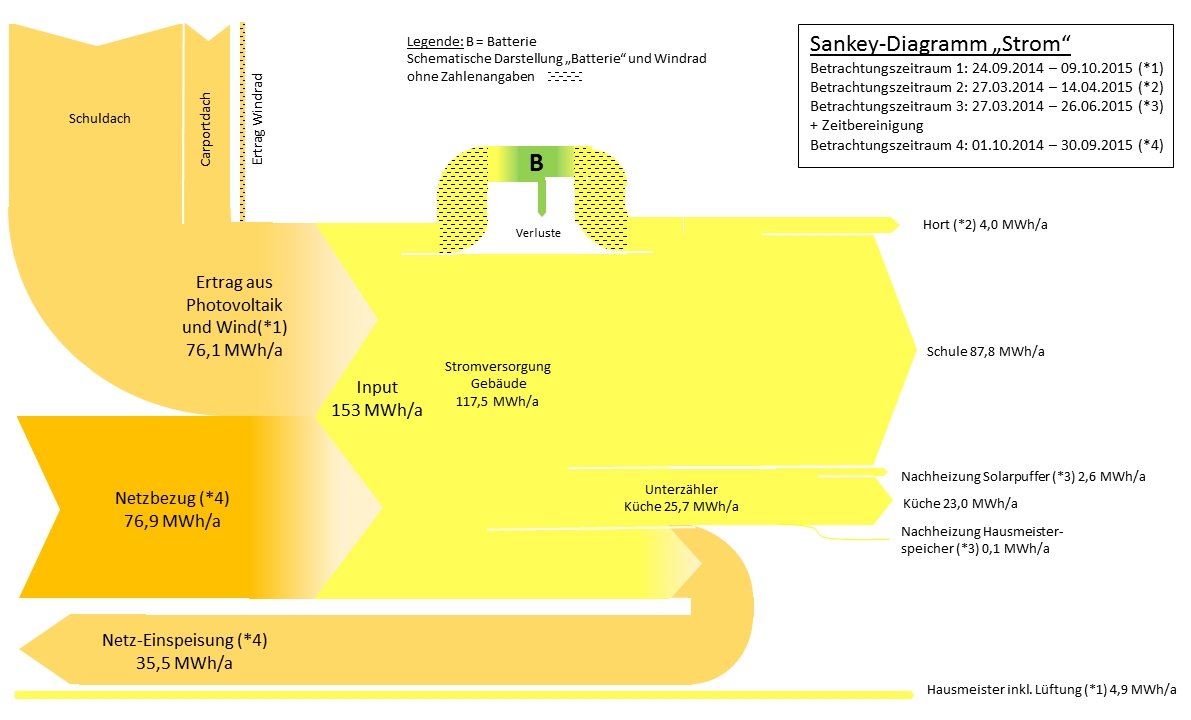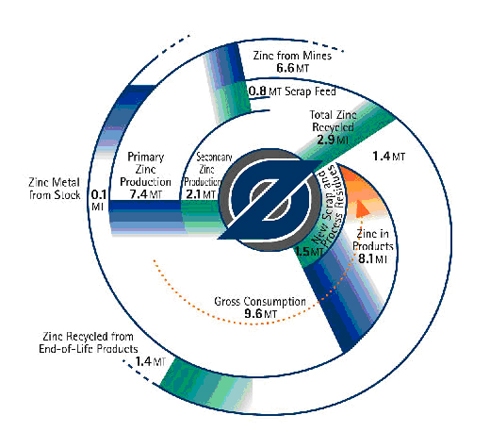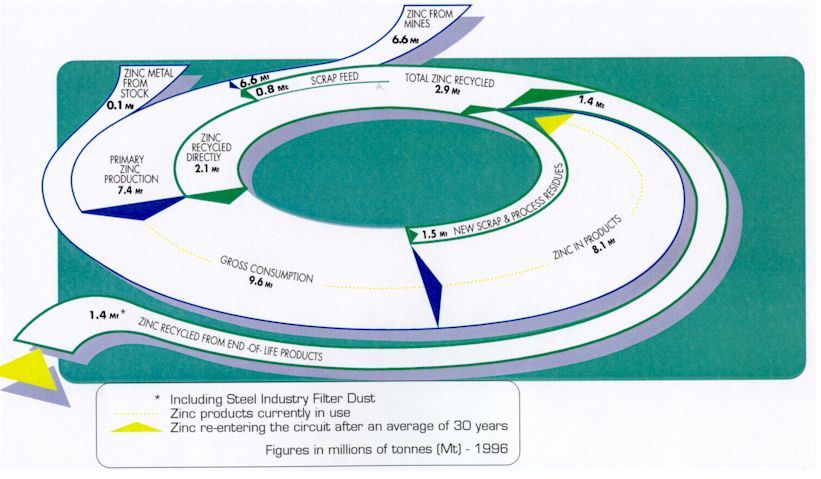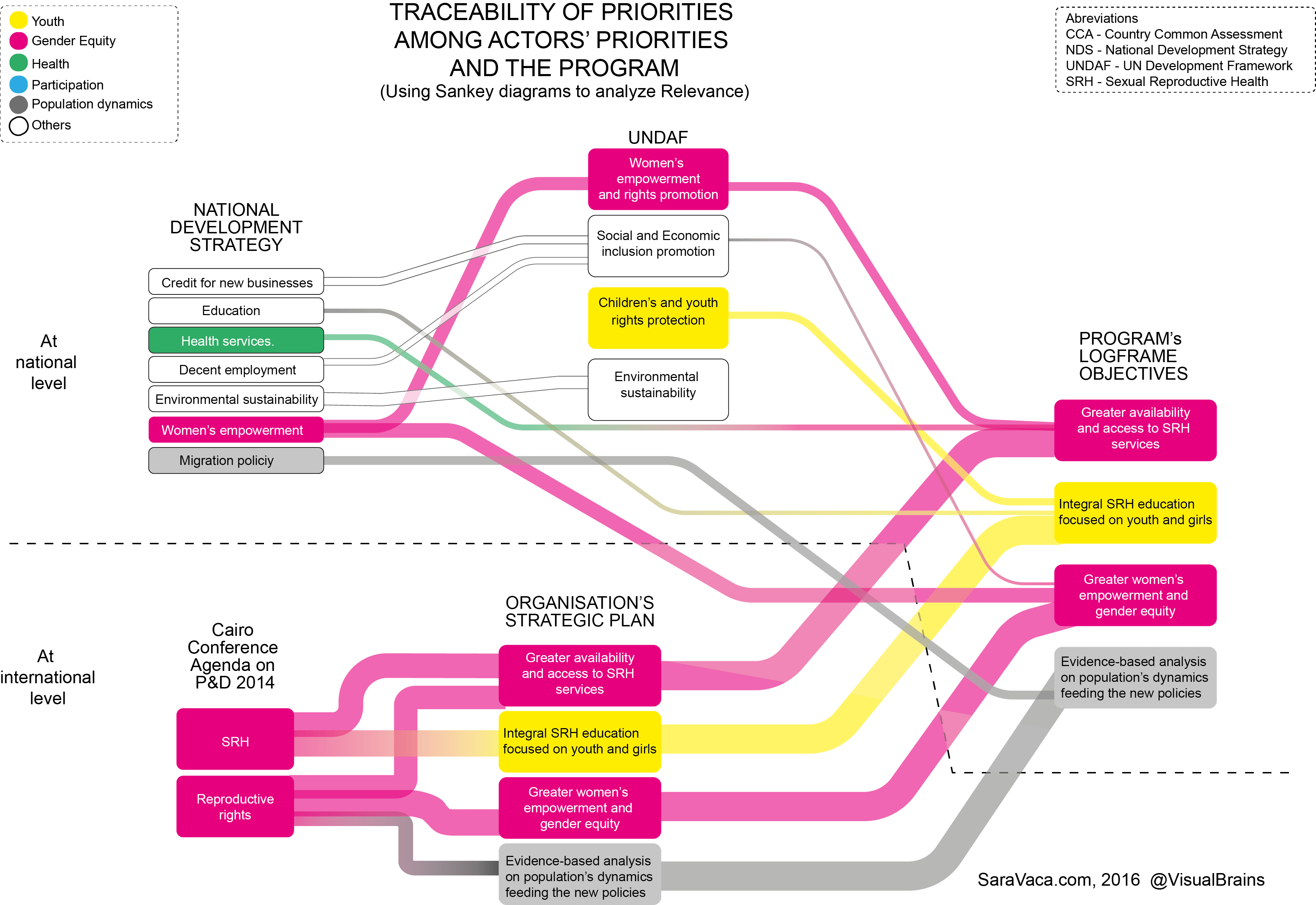Sankey diagrams from Germany (and in German) can be found abundantly on the web (try a Google image search for ‘Energiefluss Sankey Diagramm’). So, when lagging behind or short of time I sometimes pick one for a Friday afternoon post.
Here is one I found on the web page of ‘BINE Informationsdienst’, a resource portal for energy research and examples from practice. This Sankey diagram produced by Hochschule Magdeburg-Stendal.
This energy flow Sankey diagram is for the first school in Germany built in 2014 according to Passivhaus standard in Halle. Flows are in MWh aggregated over a 12 month period. Energy harvested from solar panels on the school’s roof and a wind turbine were 76.1 MWh, with energy from grid amounting to 76.9 MWh. However, 35.5 MWh could be fed back to the grid (Netz-Einspeisung).



